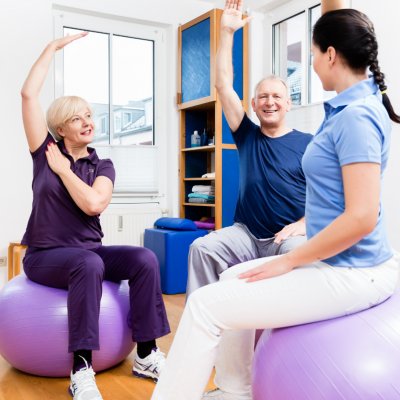Let’s discuss how patient education impacts our measured outcomes and patient satisfaction. More specifically, how it can have an impact on their personal health literacy and self-efficacy. In my opinion these are two huge barriers to our success with improving our measured value.
Get to Know Your Patients
Personal health literacy is the degree to which individuals have the ability to find, understand, and use information and services to inform health-related decisions and actions for themselves and others.1 We need to be able to assess our patient’s understanding of their condition and all contributing factors associated with it. To understand and have confidence in a plan of care and each treatment activity attached to it, our patient must have some level of understanding of their anatomy, their condition, and how their activities relate to it. We must be aware of what they know and understand. We obviously encounter those from varying educational, cultural, and socio-economic backgrounds. Levels of health literacy will vary greatly between these backgrounds.
Figure out their personality type. Match your interaction and dialog with them to their personality. There is also a concept of having conversational intelligence that can guide your dialog with people in a way that stimulates their motivation to collaborate and contribute.2 This considers actual neurochemical responses to the types of conversations you have with people. These conversations can be guided with the purpose of empowering those we interact with to naturally want to collaborate and contribute to reaching their own goals. We create our own culture within our clinical setting by how we interact with our patients and therefore develop collaborative relationships with them.
Some of us may need to get to know ourselves better as well. We have our own personalities and social interaction styles which can have its own obstacles to success. If we are unaware of this, it may be hard to develop our system of purposeful educational dialogs with our team as well as our patients. Our profession goes much further than the objective treatment application portion of our treatment sessions. We must be good with people, all kinds of people.
Let Them Know That They Are in Control
After we have made our patients aware of what their role and responsibility is in their recovery, why are many still non-compliant? Often, they have not been convinced that despite any unsuccessful past efforts, they have the ability to successfully improve their condition. Self-Efficacy refers to an individual's belief in his or her capacity to execute behaviors necessary to produce specific performance attainments.3 Self-efficacy reflects confidence in the ability to exert control over one's own motivation, behavior, and social environment. These cognitive self-evaluations influence all manner of human experience, including the goals for which people strive, the amount of energy expended toward goal achievement, and likelihood of attaining levels of behavioral performance. According to Robert John Adams, the concepts of “health literacy” and “self-efficacy” are often the greatest obstacles to success with our desired outcomes as well as maintaining those achievements.4 It is important to teach patients that their own efforts can and will be what achieves their goals.
Teach Them What You Know About Pain Science
We should consider a patient’s level of self-efficacy and its impact on their perception of pain and their awareness of their potential to manipulate that perception.5 An understanding of pain science is valuable to have as part of our knowledge base in our endeavor to “on-board” our patients and motivate them to work hard despite their pain. They need to know that their condition and the pain associated with it does not define them and their ability to live a good life.
This is a Team Effort
The entire treatment team should be on the same page with how patient education is a constant part of each treatment session and unique to each individual. Minimize any instances of mixed messages. There are some basic concepts of patient education that can be maintained consistently across the treatment team regardless of our team’s varying education levels. Communication of varying education needs of each patient between all involved clinicians is valuable in managing continuity of quality care. Support staff often spend valuable time with the patient. They are educators as well on some level. To achieve this cohesion, structured communication is essential. Consider also who you have administering the data collecting surveys. Recognizing the patient’s educational needs in producing accurate survey responses is a piece of this puzzle as well. You are an educator. With purposeful rituals of dialog, provide the right information in the right way for each individual patient. Successful outcomes depend on it. Patient satisfaction depends on it. Everyone involved must be fluidly consistent in at least some of the universal ideas of motivation, encouragement, and empowerment. Continuous assessment of a patient’s health literacy and their level of self-efficacy is important in realizing the level of education that should occur on every treatment session. We must take advantage of purposeful conversational opportunities to improve their personal health literacy. We must ensure that they become self-aware of their impact in their recovery. I believe these educational efforts will lead to optimizing outcomes and patient satisfaction and therefore the measurable data attached to them.
Key Words: personal health literacy, self-efficacy, outcomes, patient satisfaction, pain science
References
- Centers for Disease Control and Prevention. What is health literacy. Accessed April 11, 2024. https://www.cdc.gov/healthliteracy/learn/index.html
- Glaser JE. Conversational Intelligence. 1st ed. Rutledge; 2016
- American Psychological Association. Teaching tip sheet: Self-efficacy. Accessed April 11, 2024. https://www.apa.org/pi/aids/resources/education/self-efficacy
- Adams RJ. Improving health outcomes with better patient understanding and education. Risk Management and Healthcare Policy. 2010;3:61-72. doi:10.2147/RMHP.S7500
- Jackson T, Wang Y, Wang Y, Fan H. Self-efficacy and chronic pain outcomes: a meta-analytic review. J Pain. 2014;15(8):800-814. doi:10.1016/j.jpain.2014.0.002
The author declares no competing interests.
Author Bio
Jason R. Oliver is a Physical Therapist Assistant with APTA’s Orthopaedic Advanced Proficiency and currently serves AOPT as the PTA Engagement Community Chair. He previously served APTA Louisiana as the PTA Caucus representative as well as AOPT’s PTA EIG Chair, and PTA Steering Committee Chair. Jason has an associate degree in Physical Therapy from Our Lady of the Lake College in Baton Rouge, LA, and a Bachelor of General Studies with minors in kinesiology, psychology, sociology and philosophy from Louisiana State University. Jason is a private practice owner and a member of APTA’s Private Practice Section for the last two years and has been treating outpatient orthopaedic conditions since 1999. He joined the APTA and its Orthopaedic Section as a student in 1998 and has been a member since.

